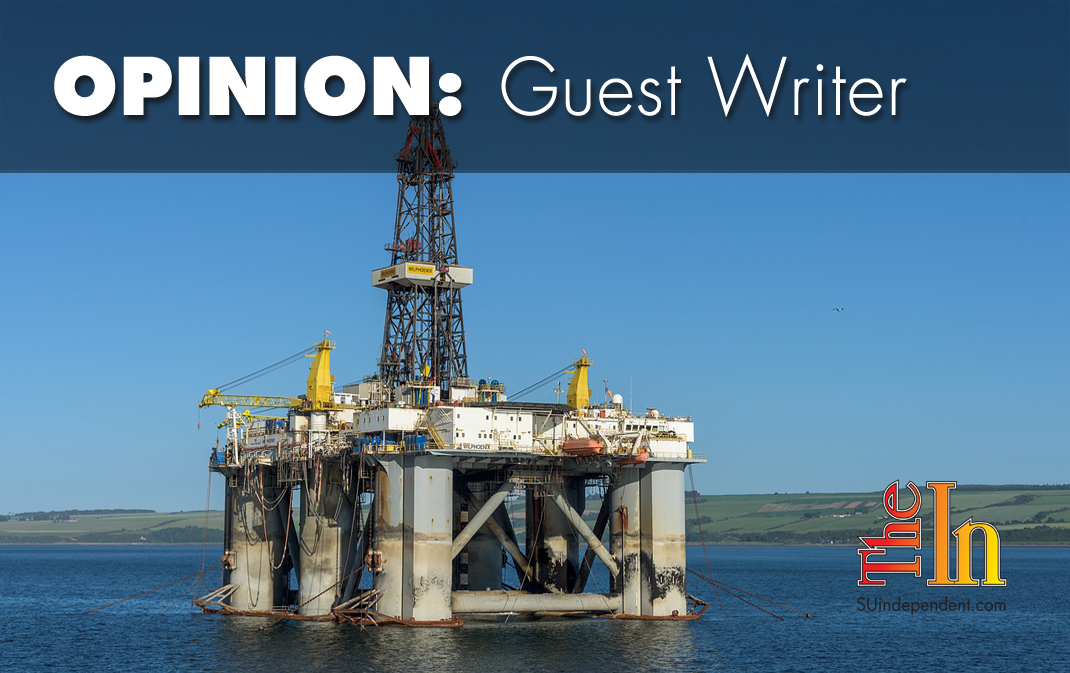
Offshore drilling: The coast is clear
By Robert L. Bradley Jr.
In the coming months, the Department of the Interior will likely issue a new draft of its five-year plan to expand offshore drilling in America’s outer continental shelf, the submerged federal land off America’s coasts.
Unsurprisingly, the plan has environmentalists up in arms.
As soon as former Sec. Zinke unveiled it, a green coalition including the Natural Resources Defense Council and the Sierra Club said the plan would cause “severe and unacceptable [environmental] harm.”
Such concerns are unfounded. Expanding offshore drilling would help workers and all of us at the pump without harming the environment. The sooner the plan is implemented, the better.
Currently, drilling is prohibited in 94 percent of the outer continental shelf. The administration’s plan would open 90 percent of the area to energy exploration and allow the most lease sales in American history. The short-term goal is to inventory America’s vast offshore mineral wealth. That oil and gas may be years away from extraction, but an energy-rich future begins now.
Former Sec. Zinke’s plan has been estimated to put 90 billion barrels of oil and 327 trillion cubic feet of natural gas into play. It could create more than 800,000 jobs, generate $200 billion in revenue for the federal government, and boost American energy production by as much as 3.5 million barrels of oil a day.
Every barrel is needed. Official forecasts see rising demand out for decades, not years. And even Peak Demand forecasters recognize the need for replenishment, not keep-it-in-the-ground policies.
As part of their fearmongering efforts, environmentalists highlight the Macondo oil spill. In 2010, BP’s Deepwater Horizon rig exploded and sank, leaking oil into the Gulf of Mexico. But this extremely rare, worst-case event should not stop leasing and offshore development; it should incite new-generation technology and improve best practices.
And it has. Take the blowout preventer, the type of valve that failed to stop the flow of oil and gas during BP’s oil spill. As part of a modernization effort, Noble Corp’s Gulf of Mexico division is working on an electrically powered blowout preventer. No matter how deep it is underwater, the new valve can shut with immense force without leaking any fluid into marine habitats.
The industry-funded Center for Offshore Safety was created to ensure that a Macondo/Deepwater Horizon tragedy never recurs. The driving force is self interest. Ask BP, which has expended $65 billion for its five-million-barrel spill, or $13,000 per barrel. That was oil that could have been produced and sold at the time for $85 per barrel.
The answer is far less overregulation such as imposed by Obama’s Department of Interior. A parting shot by the Obama Administration to keep offshore oil in the ground prescribed new regulations that were overly prescriptive and even counterproductive to safety. As much as $900 million in extraneous costs are estimated in the rule’s first decade, resources that could go to extracting more energy for America and the world.
Expanding offshore drilling is a triple win for consumers, workers, and taxpayers. Damage to the environment will be very rare and subject to full restitution. The Trump administration should not let green hysterics delay its plan to inventory America’s vast mineral-resource wealth. Unlocking American energy today ensures affordability, reliability, and progress tomorrow.
Robert L. Bradley Jr. is the founder and CEO of the Institute for Energy Research.
The viewpoints expressed above are those of the author and do not necessarily reflect those of The Independent.
How to submit an article, guest opinion piece, or letter to the editor to The Independent
Do you have something to say? Want your voice to be heard by thousands of readers? Send The Independent your letter to the editor or guest opinion piece. All submissions will be considered for publication by our editorial staff. If your letter or editorial is accepted, it will run on suindependent.com, and we’ll promote it through all of our social media channels. We may even decide to include it in our monthly print edition. Just follow our simple submission guidelines and make your voice heard:
—Submissions should be between 300 and 1,500 words.
—Submissions must be sent to editor@infowest.com as a .doc, .docx, .txt, or .rtf file.
—The subject line of the email containing your submission should read “Letter to the editor.”
—Attach your name to both the email and the document file (we don’t run anonymous letters).
—If you have a photo or image you’d like us to use and it’s in .jpg format, at least 1200 X 754 pixels large, and your intellectual property (you own the copyright), feel free to attach it as well, though we reserve the right to choose a different image.
—If you are on Twitter and would like a shout-out when your piece or letter is published, include that in your correspondence and we’ll give you a mention at the time of publication.



